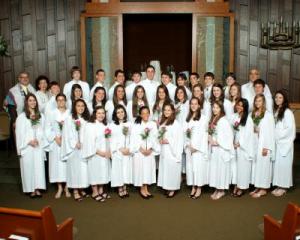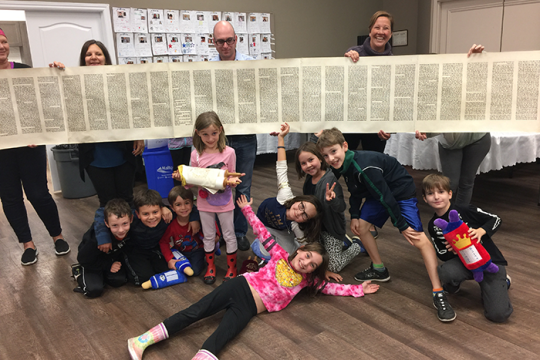
As we approach the Festival of Shavuot this coming week, tens of thousands of American Reform Jews will be fondly recalling a milestone moment in their own personal religious lives - their confirmation ceremonies. For generations of Reform Jews, the arrival of the warm weather of early summer was linked to the celebration of this major Festival of the Jewish calendar, and given personal meaning as the occasion that marked the culmination of their years of religious school education. The confirmation experience, in most temples, made an indelible impression on many adolescent minds and hearts. It was the year of personal study with their rabbi-often their first opportunity to develop a personal relationship with a previously distant figure-and preparing the impressive confirmation service, by learning one's part in the liturgies that became popular, or in many cases, composing one's own statement of Jewish commitment. Then there was the ceremony itself on Shavuot, with the procession of the confirmation class in their white gowns, the "floral offering" at the Ark, and the singing of the old chestnut hymn, "Father, See Thy Suppliant Children." Variations on all of these elements are embedded fondly in many of our memories.
The focus of much study on the history of Reform Judaism centers on the ritual traditions and observances that were rejected by our Movement's pioneers in their efforts to free our faith from centuries of superstition and obsolete cultural practices that had lost their meaning in the modern world. However, it is also important to reflect on the creative development of new ceremonies and approaches to Jewish life and worship that the early Reformers engaged in. None was more characteristic of the liberal Jewish spirit than the confirmation ceremony.
Introduced in 1810, at the beginning of the organized Reform Movement in Germany, the concept of confirmation was originally intended to broaden the scope of the traditional bar mitzvah. Either as a supplement or a substitute, depending on the various approaches that prevailed, the new experience was conceived to provide a meaningful way for children to understand the deeper spiritual and moral values of Judaism, beyond the ritual preparation for a bar mitzvah Torah reading. A number of core Jewish ideals were incorporated into the confirmation ceremony, including the communal context of affirming and experiencing the tradition together with other Jews, in contrast to the individual focus of bar mitzvah.
In addition, as early as 1817, confirmation reflected the major Reform principle of gender equality by including both girls and boys-becoming the first (very radical) opportunity for an inclusive, egalitarian religious celebration in Judaism. Moreover, by the mid-19th century, both in Europe and America, confirmation was linked to the observance of the Festival of Shavuot. The connection was brilliant. We would commemorate the giving of the Torah at Mount Sinai with a new and meaningful ceremony that would bring that experience to life for each new generation. In the authentic spirit of modern Reform Judaism, every child would be given an opportunity to learn our tradition, and then, at a more mature age than 13, would have a context for "confirming" their own personal, intellectual and spiritual commitment to continuing Jewish life and learning as young adults-symbolically reliving the Sinai moment by accepting the Torah for themselves. EvenShavuot's "first-fruits gathering" symbolism of historic seasonal significance was explicit in the confirmation of our children as our own early harvest of the yield of our family and congregational life.
Confirmation came to represent the genius of Reform Judaism's commitment to creatively renewing our tradition. However, in our time, confirmation has sadly declined in importance to many within our community. The excesses of bar and bat mitzvah celebrations have become the focal point for "coming of age," and many congregations have failed to provide a more meaningful milestone to offset the clichéd stereotype that these lavish parties embody. Parenthetically, one of our most important festivals has become a neglected holiday, when once it was one of the major highlights of the year in Reform temples. As we struggle to find effective ways to engage our teenagers in continuing Jewish experiences and education, a renewed commitment to the possibilities of confirmation - called either by its historic name or by the contemporary Hebrew term Kabbalat Torah - can be a vital resource alongside summer camp and youth group. As in so many instances, we can find inspiration and direction from the courageous, creative spiritual vision of our own Reform Jewish heritage.
Rabbi Howard A. Berman serves as Executive Director of the Society for Classical Reform Judaism.



